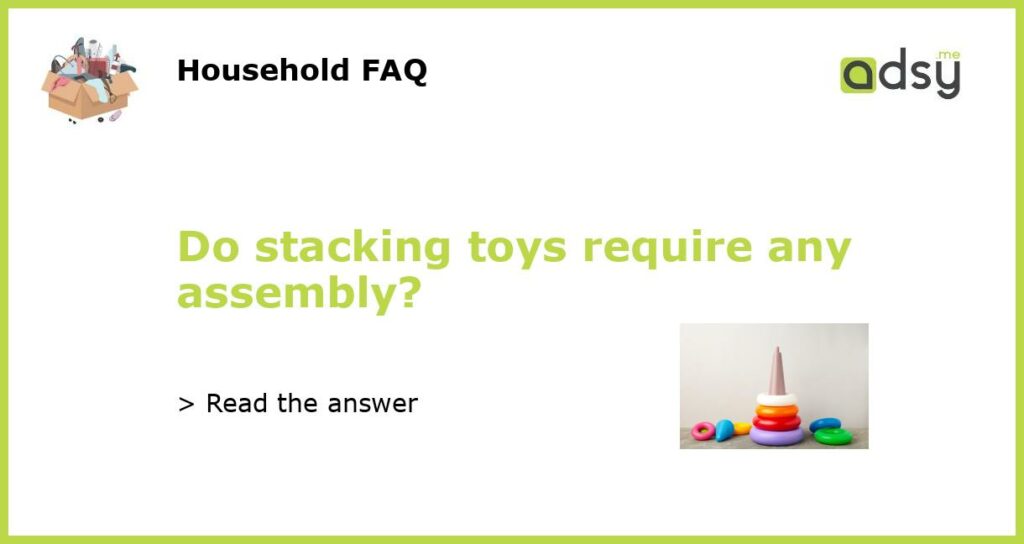Yes, stacking toys require assembly
Stacking toys are popular educational toys for young children. They consist of multiple pieces that need to be assembled before they can be used. Assembly is an important step in the process of playing with stacking toys, as it helps children develop fine motor skills, hand-eye coordination, and problem-solving abilities. In this article, we will explore the reasons why stacking toys require assembly and discuss some tips for assembling them effectively.
Reasons why stacking toys require assembly
There are several reasons why stacking toys require assembly. Firstly, assembling the toys helps to improve the child’s fine motor skills. The act of picking up and placing each piece in the correct position requires coordination between the fingers and the eyes. This helps to strengthen the muscles needed for tasks such as writing, drawing, and using utensils.
Secondly, assembly is a form of cognitive exercise. When children are given the task of assembling a stacking toy, they are required to think critically and problem-solve. They need to analyze the different shapes and sizes of the pieces and figure out how they fit together. This helps to develop their spatial awareness and logical thinking abilities.
Lastly, assembly adds an element of excitement and engagement to the playing experience. When children are actively involved in the process of building their own toy, they feel a sense of accomplishment and ownership over the final product. This can boost their confidence and make them more likely to continue playing with the toy.
Tips for assembling stacking toys effectively
Assembling stacking toys can sometimes be a challenging task, especially for younger children. Here are some tips to make the process more effective and enjoyable:
1. Start with simple designs: If your child is new to stacking toys, it is best to start with simple designs that have fewer pieces. This will make the assembly process less overwhelming and increase the chances of success.
2. Provide guidance and support: Offer your child guidance and support throughout the assembly process. Show them how to hold the pieces and guide them in placing them in the correct position. This will help to build their confidence and improve their skills over time.
3. Break it down into steps: Break down the assembly process into smaller steps to make it more manageable. Start with the bottom piece and gradually add on the additional layers. This will help your child understand the sequencing and order of assembly.
4. Use visual cues: Point out visual cues such as colors or patterns to help your child identify the correct placement of each piece. This can make the process more enjoyable and increase their engagement with the toy.
5. Practice patience: Assembling stacking toys can be a time-consuming task, especially for younger children. Practice patience and encourage your child to take their time and enjoy the process. This will help them develop perseverance and resilience.
In conclusion
Stacking toys require assembly, and this process is important for children’s development. It helps improve their fine motor skills, cognitive abilities, and engagement with the toy. By following the tips mentioned above, you can make the assembly process more effective and enjoyable for your child. So next time you purchase a stacking toy, embrace the assembly process and watch your child’s skills grow!






